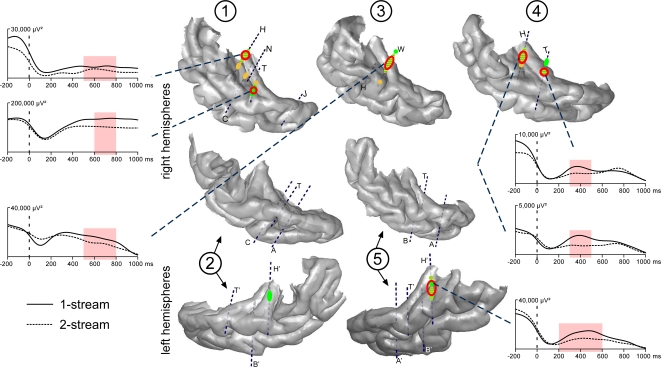Figure 4.
Emergence and modulations of evoked steady-state activities on the 3D rendering of individual temporal cortices. Emergence after the onset of part 2 (0 ms) are depicted on the temporal cortices, in green for 21 and yellow for 29 Hz steady-state activities. A first focus of steady-state activities was bilateral and located in the posterior part of the HG and a second one in the right hemisphere only, in a more anterior part of the HG. Twenty-one hertz activities were found to be enhanced in the 1-stream condition, in four patients (‘1-stream > 2-stream’, red circles). Time profiles at 21 Hz of these effects are plotted (significant differences are defined by light-red shaded areas). The power of these oscillatory activities is baseline corrected with respect to the (−250, −150 ms) period preceding part 1. Forty-two hertz steady-state emergence and effects presented quite similar topographies than 21 Hz steady-state activities. Each number corresponds to a patient, patients #2 and 5 being implanted in both hemispheres.

